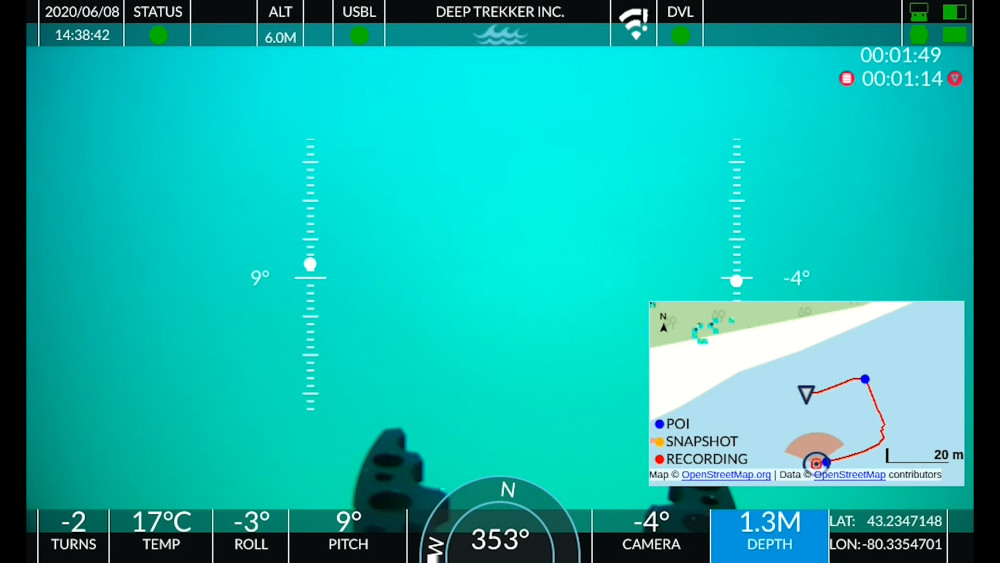Home › Forums › General › Industry News Updates & Discussions › Explosion – Deep Water Horizon Drilling Rig in GOM, USA
- This topic has 240 replies, 38 voices, and was last updated 14 years ago by
James McLauchlan.
-
AuthorPosts
-
May 28, 2010 at 7:39 pm #27581
James McLauchlan
ParticipantYou are right. It is an obvious solution. It won’t kill the well but it will prevent further pollution and buy them time to intercept the well using another drill rig.
In the past I have seen engineers go off on all kinds of convoluted tangents and miss the most direct KISS solution such as that being suggest at this stage.
May 29, 2010 at 4:15 am #27582Matthew Cook
ParticipantI see that ROVNUMPTY (great handle) asked the same question about going right in at the top of the stack back on about the 21st of May. Sorry to be rehashing the same thought.
I can’t help feeling that it seems they are not thoroughly exhausting each idea before they jump to the next. I thought back when they were still working with the cofferdam that if they built a set of three or more heat exchanges out of SS hydraulic hard plumbing on the inside top of the cofferdam and used hot stabs from a couple of XLS’s (god knows they have enough of them onsite) to flow hydraulic oil through a small orifice in the lines to generate heat through oil friction then they could generate enough heat to keep the methane hydrate fluid enough (slushy) to allow them to capture the oil and gas. If they had say, three circuits, so they could always have at least two vehicles tapped in at any one time and still allow a third to change out, they could probably get about 200kw of heat on the job in a very localised area. You would think that much energy would do something. They could at least have been trying it while they were setting up that Riser Insertion Tool thing or getting set to lop the top off the BOP.
I hope I’m wrong but I’m a bit dubious about their estimate of 60-70% likelihood of success with the Top Kill since there dosn’t seem to be much back pressure with the two unstopped breaches in the riser. I wonder just how well they will be able to overcome the well pressure with it all leaking out of the riser. If the junk shots work, I guess that might do it but without that being successful, I cant really see how you could develop 3-5000psi or whatever they need with those dirty great holes in the line. If they are able to make any headway against the product at all it will be slow going and they may well be pumping for a long time. I wonder if they could pump until August? Better mud then oil …
I must say they have done some very impressive work installing the overshot tool, removing the control pods and re-installing them, tightening fittings and all teh rest. There will be many a ROV puke bar room story to come out of this.
Enough backseat driving for one evening. It really is frustrating though standing back with the rest of the public and watching this whole mess screwing up the GOM and not being able to do anything about it. I have been on some NOAA research jobs as well as in the oil patch in that area and it really is a very cool part of the world. Not just the coast but coral, sponges and all the rest of the underwater critterdom. They’ll be xxxxed. It’s all a crying shame.
May 29, 2010 at 9:59 am #27583iROV
ParticipantDeepwater-Horizon Interim Incident Investigation
http://energycommerce.house.gov/documents/20100527/BP.Presentation.pdf
May 29, 2010 at 10:17 am #27584James McLauchlan
ParticipantDeepwater-Horizon Interim Incident Investigation
http://energycommerce.house.gov/documents/20100527/BP.Presentation.pdf
Which is a 20MB 48 page document!
May 29, 2010 at 3:10 pm #27585May 29, 2010 at 3:42 pm #27586Rons_ROV_Links
ParticipantDeepwater-Horizon Interim Incident Investigation
http://energycommerce.house.gov/documents/20100527/BP.Presentation.pdf
Which is a 20MB 48 page document!
This PDF document was probably created by a blond US citizen. If you optimize it with Adobe Acrobat it’s less than 7MB! 😆
May 29, 2010 at 3:45 pm #27587Rons_ROV_Links
ParticipantYesterday I placed the live stream from the ROV working around the BOP on the front page as a news item.
Maybe James can place it in a block and squeeze it in between the forum block and news block temporary.I was actually wondering if there are people here having a look at this live stream on a regular base?
May 29, 2010 at 11:40 pm #27588Rons_ROV_Links
Participant‘Top kill’ fails, BP moves on ‘to next option’: the Lower Marine Riser Package (LMRP) Cap procedure
http://edition.cnn.com/2010/US/05/29/us.gulf.oil.spill/index.html?hpt=T1
May 30, 2010 at 7:36 am #27589iROV
Participantoceaneering video portal
http://interactive.foxnews.com/livestream/live.html?chanId=2
May 30, 2010 at 10:14 am #27590Rons_ROV_Links
ParticipantBP ‘top kill’ live feed makes stars out of disaster bots – CSMonitor.com: http://bit.ly/dyYRFr
May 30, 2010 at 10:45 am #27591Rons_ROV_Links
ParticipantDutch oil spill response team on standby for US oil disaster
Two Dutch companies are on stand-by to help the Americans tackle an oil slick in the Gulf of Mexico. The two companies use huge booms to sweep and suck the oil from the surface of the sea. The US authorities, however, have difficulties with the method they use.
http://www.rnw.nl/english/article/dutch-oil-spill-response-team-standby-us-oil-disasterA patently false and outright lying Article… The US has hundreds of skimmer vessels. In fact many are being used to combat this spill. The reason we don’t want this companies vessels is because they throw oil back into the water. With the skimmers that are being employeed right now, they suck the oil up, the mixture (oil and water) is run through an OWS (Oily water separator), the oil is placed into storage holds and the water, which doesn’t contain oil is put back over the side.
Why don’t we strive for a little quality rather than quantity…
Chief
Well, 8 sweeping arms Koseq are on transport to the GoM on request of T&T.
These sweeping arms were used for cleaning up the Erika , the Sea Empressand and The Prestige oil spills.– http://www.youtube.com/watch?v=hrv9bqIarPQ
– http://www.youtube.com/watch?v=2HwvIBpqZ5w (Erika)
– http://www.youtube.com/watch?v=-HA-Kx6_e3c (Prestige)May 30, 2010 at 1:38 pm #27592Matthew Cook
ParticipantThe following are some suggestions I just put to BP through the "Deepwater Horizon Response" website. I submitted some ideas on using friction heated ROV hydraulic oil to break down Methane Hydrates in the "Top Hat" back on the 11th May and only just got word yesterday that the idea is under "Tecnical Review". By the time it gets to someone who understands it it will be August.
Anyway, I thought this might be of interest and make for some interesting discussion:
Dear Sir/Madam,
In order to make the proposed LMRP grommet seal more robust and simpler to install, I propose that in addition to the proposed grommet, an oil filled inflatable bladder plug seal sized to the ID of the BOP at the cutoff point and fitted with a central bypass annulus of the same size as the drill string be utilized.
The inflatable plug, of which many sizes are generally held in stock by manufacturers or quickly fabricated (I am not a supplier but can make some recommendations as to suitable vendors if required), would be oil filled and plumbed with a 1 Bar (14psi) oil compensator. The compensator would be kept isolated by an ROV operated ball valve until the seal was installed into the BOP.
To aid installation, the inflatable seal would be fitted with a Dacron or similar machined guide nozzle on the lower end to act as a guide to assist with installation. Given that oil and gas will be in high flow at the time of installation, it is strongly suggested that the LMRP be fitted with some form of stinger that will aid the installation once the visibility is lost due to diverted oil and gas.
In order to accurately position the LMRP without the aid of visual alignment, I have had good use with CDL LTDs Inertial Navigation Units and suggest that the LMRP be fitted with an INS aided LBL system for final guidance. Combined with the Long Base Line positioning these instruments provide centimeter level positioning and may help with the final guidance of the LMRP once the visibility is lost.
Once the LMRP is guided into position with an ROV (if time permits, consider fitting a dedicated thruster package to LMRP rather than rely on an external ROV to coordinate movement in zero visibility) and the bladder plug seal is inside of the BOP, the ball valve between the compensator and the bladder will be opened to place the bladder under low pressure to provide a robust low pressure seal between the well and the ambient ocean.
Regards,
May 30, 2010 at 4:22 pm #27593Mark DuPriest
ParticipantBP reportedly will not take the Governor of Louisiana’s calls, good luck with them paying attention to you seaview.
May 30, 2010 at 4:37 pm #27594Matthew Cook
ParticipantYup, not much chance. It’s one step better then yelling at the TV which is about the only other outlet most of us have had on this!
May 31, 2010 at 3:21 pm #27595James McLauchlan
ParticipantBut seaviewsystems idea does sound a little more on the mark compared to golf ball ‘junk shots!
-
AuthorPosts
- You must be logged in to reply to this topic.



